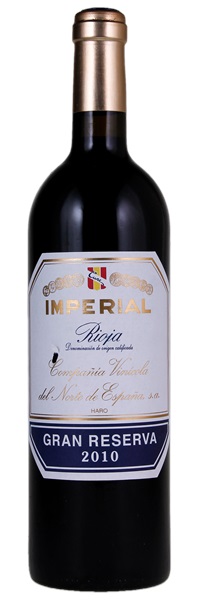Estimate

...aromas of spice cake, baked plum and tobacco aromas...smoothly textured finish deals cocoa and mocha notes.
...very spicy and still slightly oaky, with ripe fruit without any excess...palate shows that seriousness, with some dusty tannins and a dry finish.
Smoky oak-accented red berries, cherry pit, incense and mocha aromas show outstanding clarity and vivacity. Sweet, expansive, palate-staining raspberry, cherry pie, vanilla and floral pastille flavors fan out steadily on the back half. The smoky note reemerges on an impressively long, floral- and spice-driven finish that's given shape by supple, harmonious tannins.
Dried cherry, plum compote, black olive and cola flavors are supported by firm tannins and balsamic acidity in this plump red. Energetic yet harmonious, in the traditional style.
Compañía Vinícola del Norte de España (CVNE)